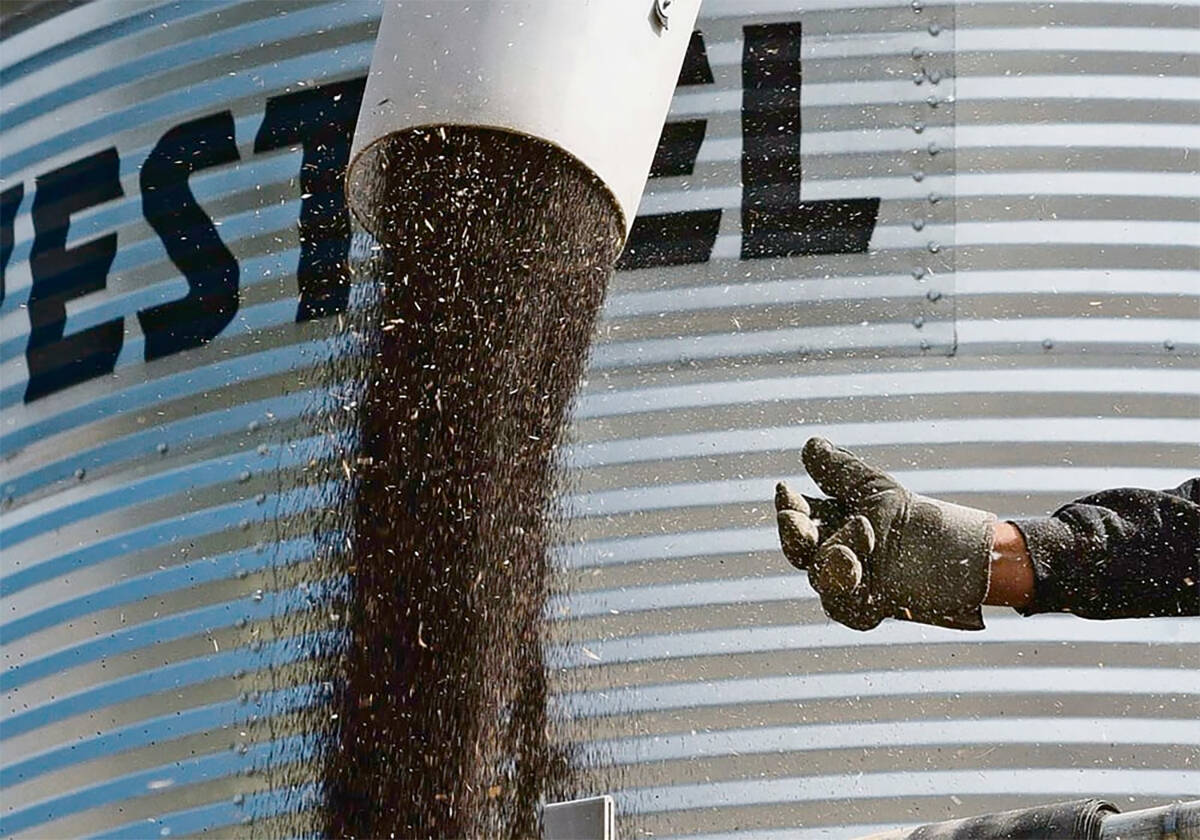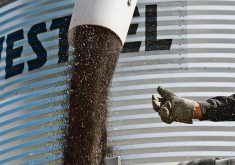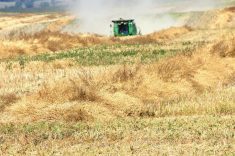Land at the heart of a controversy dubbed potatogate is back in the public eye.
Alberta’s sustainable resources development department has issued a request for proposals to buy a 16,000 acre parcel of crown land southwest of Medicine Hat.
It is the same land that generated public concern last year when a potato farm offered to buy it without public knowledge or open bidding.
The native grassland is adjacent to land owned by SLM Spud Farms, which is farmed under irrigation. Owner Louis Ypma made the purchase offer but later withdrew it.
Read Also

Farmers urged to be grain-safe this fall
Working around grain bins comes with risk, from farmers falling to drowning in grain: Experts have five tips to help avoid grain-related accidents this harvest.
Sustainable resources minister Mel Knight said the request for proposals does not mean the land will be sold. Acceptable proposals have to meet requirements for existing grazing leases, irrigation and compliance with species at risk legislation.
“What we see here is an opportunity to develop an agricultural project that would create jobs and new investment in the agriculture industry in southern Alberta,” said Knight.
“There are some very serious considerations here and the people that would respond would most certainly have to meet those criteria. I couldn’t say whether or not anybody, number one, will respond, and number two, whether or not they’d meet the criteria.”
Knight said native grassland is an important part of the Alberta landscape, but this particular parcel is also suitable for farming.
“This is some of best land for irrigation because of the soil type and classification and the drainage features.”
Ypma said the request for proposals came up suddenly and he has had little chance to consider whether to submit a proposal. He didn’t rule out the possibility.
Members of the Forty Mile Grazing Association have also not been able to assess potential effects on pasture availability to its 42 patrons.
“We don’t know all the details yet,” said association president Jim Babe. “I don’t know how it’s going to affect us, exactly.”
Sale of the land would affect 7,600 acres, or 20 percent of the land that association patrons now use to run 600 yearlings and 1,800 cow-calf pairs, Babe said.
“If we actually lose this land, we’ll have to have less numbers or every farmer will have to have less allotment.”
Last year’s purchase offer included a land swap provision for graziers, but Babe doesn’t know if something similar would be offered this time.
The potential sale of crown land has again raised criticism about destruction of native prairie and wildlife habitat.
Carolyn Campbell, conservation specialist with the Alberta Wilderness Association, said her organization is not pleased.
“We’re very disappointed and concerned that the government, for reasons that are not clear to us at all, seems intent on destroying this quite high quality piece of native grassland,” she said.
Knight said money from a possible sale would be used to buy other native grassland.
“I believe that there is a lot of land in southern Alberta, native grassland, that has a lot higher critical habitat value, and environmental and ecological value, that we could set aside if we had funding available to do it.”
But Campbell said that a government- appointed panel for the South Saskatchewan Planning Region earlier this year recommended no further conversion of native prairie.
In that report, two objectives under the heading of biodiversity recommend support measures to conserve species habitat and reduce risk to biodiversity by minimizing conversion of native landscapes.
“To put this land up for sale now flies in the face of their own appointed panel’s recommendations and it sort of disrespects that whole land use planning recommendation that’s now in process,” Campbell said.
“They should not be selling this land when they have that on the table.”
The government will accept proposals for a 60 day period ending Oct. 31, which will then be reviewed by a committee.
———
subscriber section=news, livestock, none















